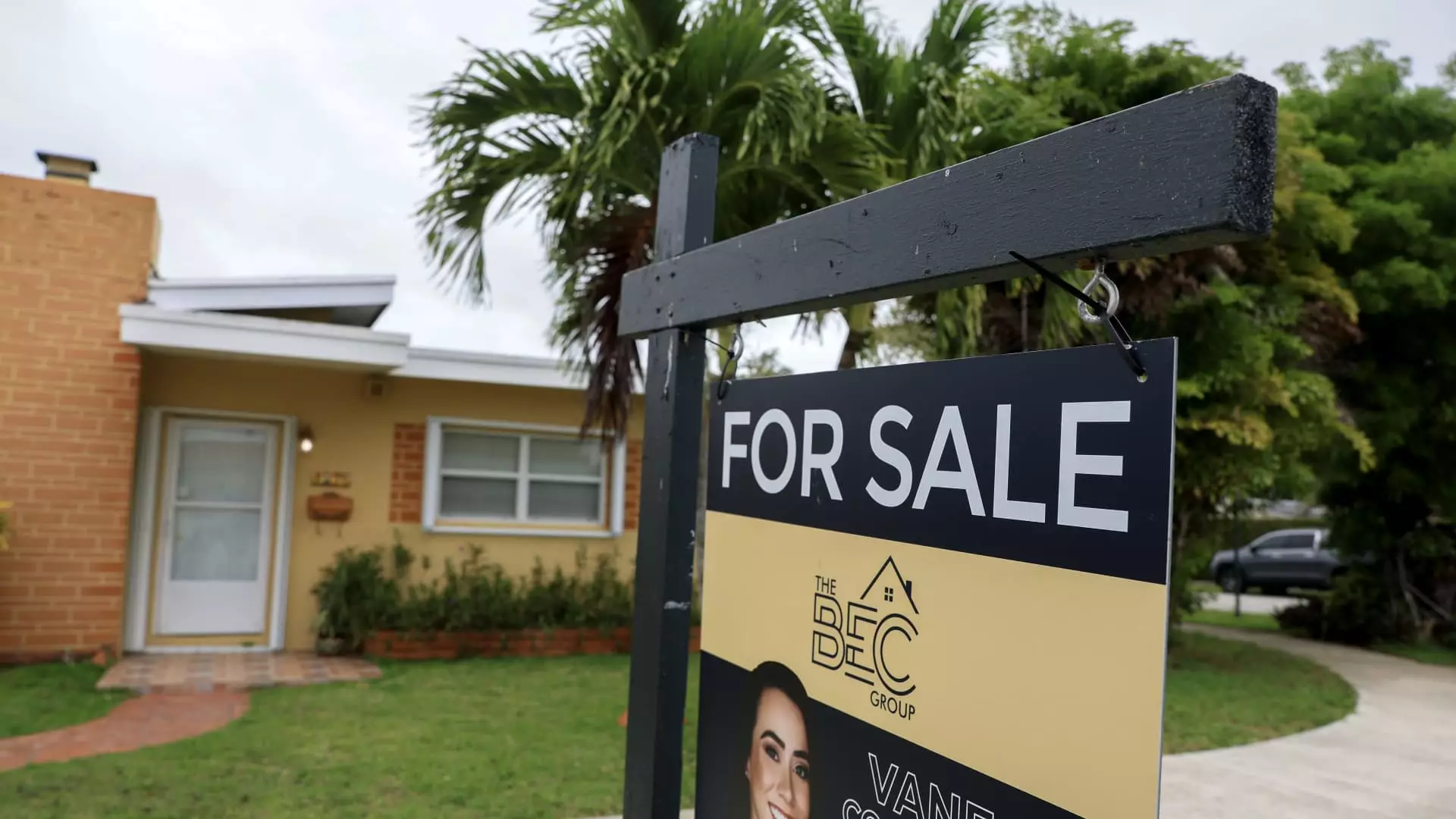Last week’s slight dip in mortgage rates should have been a beacon of hope for potential homebuyers and those seeking to refinance. Yet, the reality is rather grim: mortgage application volume plummeted by 3.9%. This demonstrates a disheartening trend where even favorable conditions fail to ignite interest from prospective homebuyers. The Mortgage Bankers Association reported a mere decrease in average contract interest rates for 30-year fixed-rate mortgages—from 6.98% to 6.92%—but this fractional drop seems inconsequential.
With economic uncertainty and rising prices dominating headlines, many are understandably reluctant to commit to long-term financial obligations. The lingering effects of inflated property values and stagnant wage growth create a daunting environment, leading to a general lack of enthusiasm among prospective borrowers. When rates remain trapped in a narrow band, and fear prevails over optimism, the allure of home financing simply fades away.
The Refinance Dilemma
Refinancing is often seen as the lifeline for cash-strapped homeowners, yet applications for refinancing fell by 4% last week. This decline is particularly concerning, as it is juxtaposed against a staggering 42% increase compared to the same week last year. The message here is clear: even if rates are lower than a year prior, potential borrowers are playing a waiting game, seeking more significant reductions before making a move. It’s baffling that a modest rate drop prompts hesitation rather than instant action. The average refinance loan size hitting a record low since July 2024 only underscores the growing apathy in the marketplace.
Economist Joel Kan articulates the sentiment eloquently, acknowledging the freeze in refinancing activity across both conventional and government segments. Borrowers are not merely waiting for more attractive rates; they are poised in limbo as they attempt to predict market behavior in a climate of unpredictability.
Home Purchases: A Market Overshadowed
Despite the increase in mortgage applications for home purchases—up 18% from the same week last year—any excitement that could have been generated is extinguished by a palpable sluggishness in actual closed sales. This contradiction reveals that while the perception of opportunity may increase with more available homes on the market, any larger context reveals the challenges buyers face.
The reality is that more supply doesn’t automatically translate into stronger sales; it merely exposes the sheer disparity between how many people want to buy homes and the broader economic forces at play. With mortgage rates barely shifting, and the spring buying season lacking vigor, the anxiety is palpable. Homebuyers are weighed down by the impracticalities of making a move, from crippling prices to the uncertainty that looms on the horizon.
Confronting the Stagnation
In an era where economic forces ebb and flow unpredictably, the housing market’s paralysis reflects deeper structural issues—a lack of confidence among consumers, sluggish wage growth, and recent surges in living costs are formidable barriers for potential buyers.
Although a drop in mortgage rates is a positive stepping stone, it is not a panacea. The broader economic constraints must be addressed to awaken a truly dynamic housing market. Instead of merely observing numerical fluctuations, a more holistic approach to economic improvement is essential, one that empowers consumers and generates tangible interest in home ownership.

